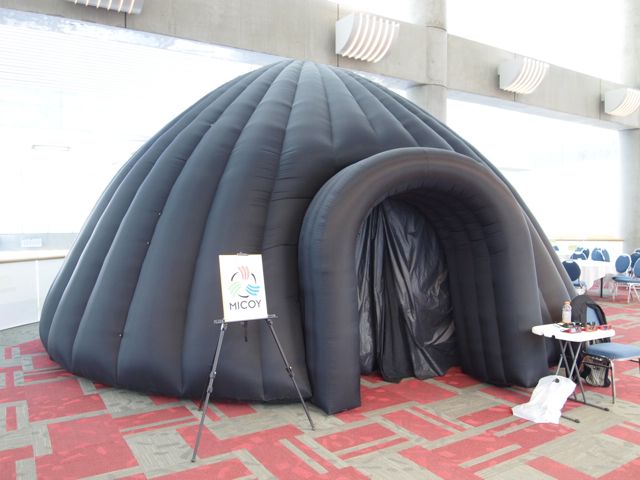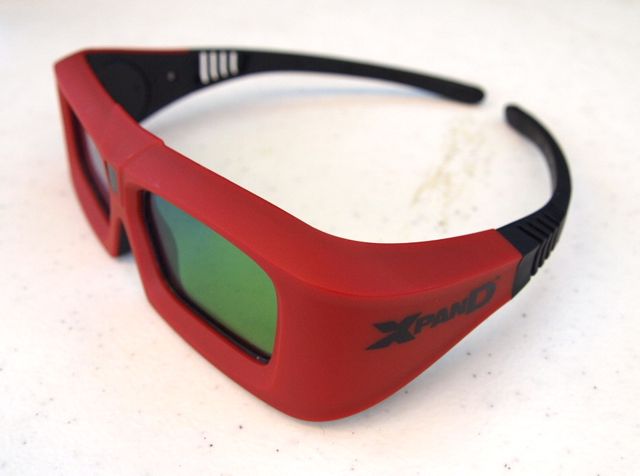Avatar 2.0: Eyes on with Micoy's 360-degree 3D Projection Technology
Near the entrance of the GPU Conference is an odd-looking inflatable hemisphere--at first glance, I thought Nvidia had brought in a Moon bounce for its conference--but it houses a new technology that lets you project 3D images in a full 360-degree environment.
"It's the closest thing in reality to the holodeck," says Don Pierce, the president and founder of Micoy.
Current 3D technology seen in theaters--think Avatar--is based on projecting an image to a flat screen. Therefore, there's a single focusing point (like when you stitch together a bunch of photos to create a panoramic image) and as a result, the 3D draws your eye into the screen; while objects do pop out, having the whole film in front of the screen causes headaches.
By contrast, Micoy's 3D rendering technology is based on a curved screen with infinite focal points, so when you're sitting in the theater, images "fill" the space between you and the screen, creating a more immersive 3D experience. Like Nvidia's and ATI's 3D technology, Micoy uses active-shutter glasses that flicker at 120-Hz, and cost about $50 per pair.
Pierce, a Hollywood veteran who has worked on computer animation in films including "All Dogs Go to Heaven" and "The Mask," has been developing this technology for the past 10 years. When he first started, he envisioned the technology would be used mainly in planetariums, but shrinking public budgets and advancements in technologies have shifted his focus, so to speak.
More powerful graphics processors have enabled him to use smaller systems, such as the 18-foot bubble at the GPU conference, and can now do 3D rendering in real-time, so the technology could be used with an Xbox 360 to play Halo, for instance. For Pierce, that means less expensive implementations, so he can sell 3D design centers to the automotive industry or combat simulation to the armed forces, and eventually, individual consumers.
Sitting in the bubble, watching the 3D video took a little getting used to, but I was impressed with the way images filled the space and flowed around me much more than what I've seen in theaters. It certainly was a more immersive experience than what I've seen in the past, and augurs an interesting future for 3D--provided we start living in geodesic domes.
Sign up to receive The Snapshot, a free special dispatch from Laptop Mag, in your inbox.
Here's what it looks like inside the bubble. Apologies in advance: It was dark to begin with, and when I put the glasses in front of the camera, it got even darker.
Michael was the Reviews Editor at Laptop Mag. During his tenure at Laptop Mag, Michael reviewed some of the best laptops at the time, including notebooks from brands like Acer, Apple, Dell, Lenovo, and Asus. He wrote in-depth, hands-on guides about laptops that defined the world of tech, but he also stepped outside of the laptop world to talk about phones and wearables. He is now the U.S. Editor-in-Chief at our sister site Tom's Guide, where he oversees all evergreen content and the Homes, Smart Home, and Fitness/Wearables categories for the site..


